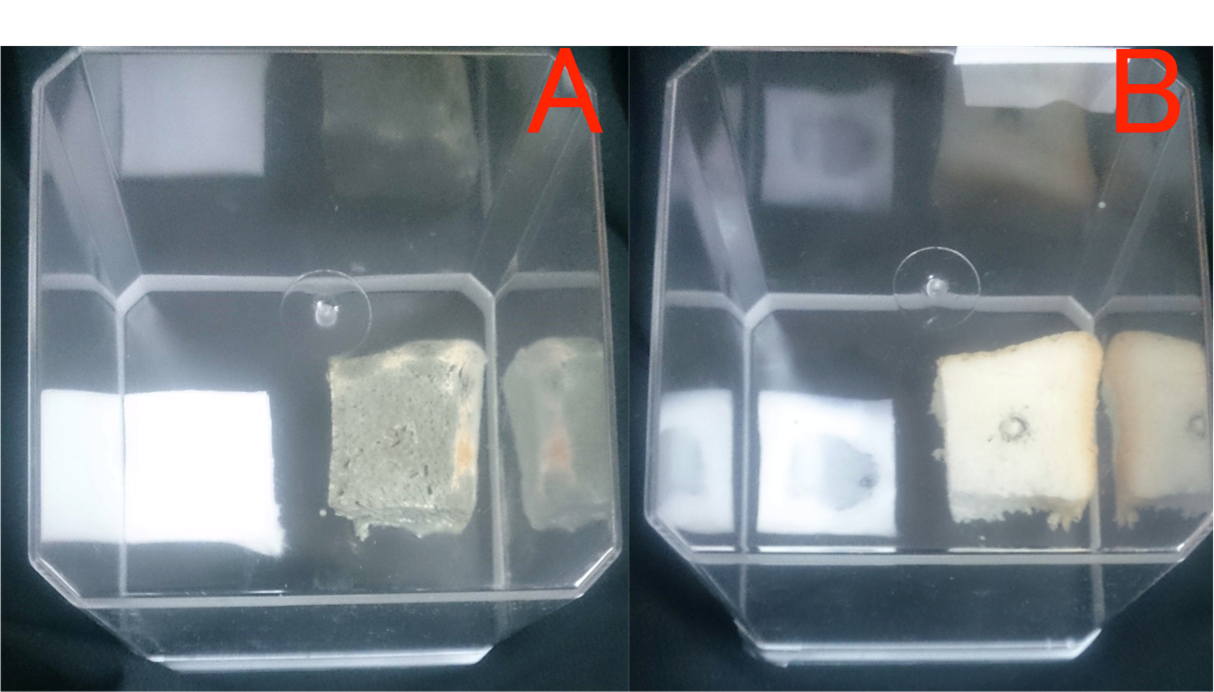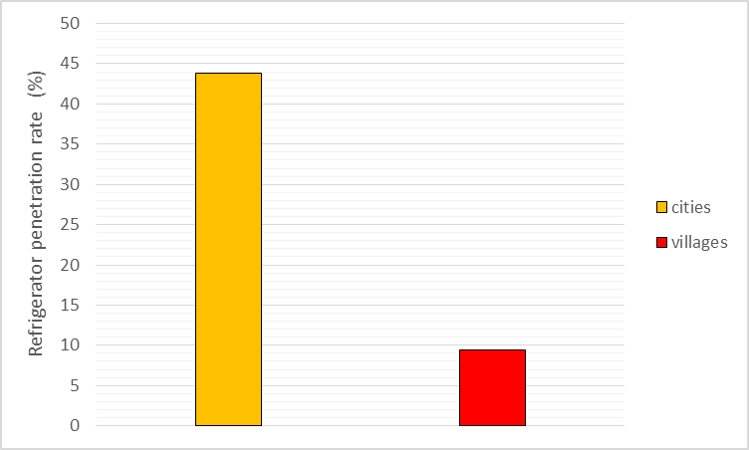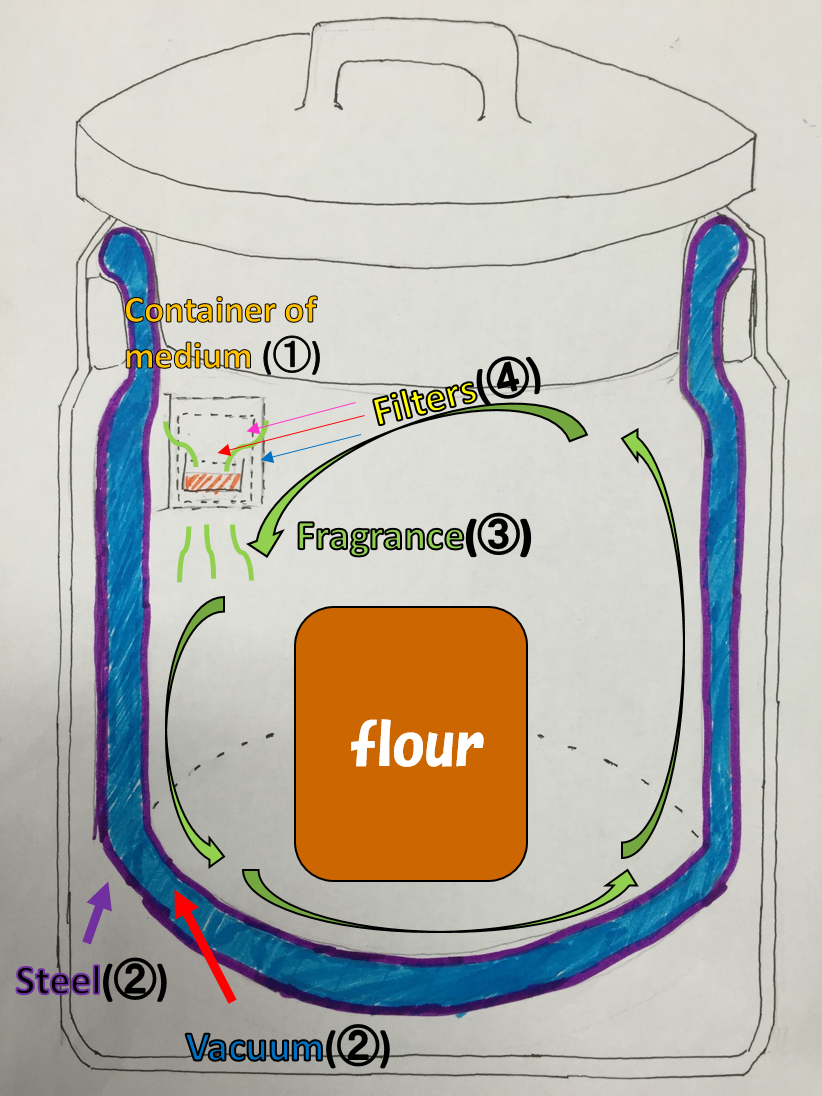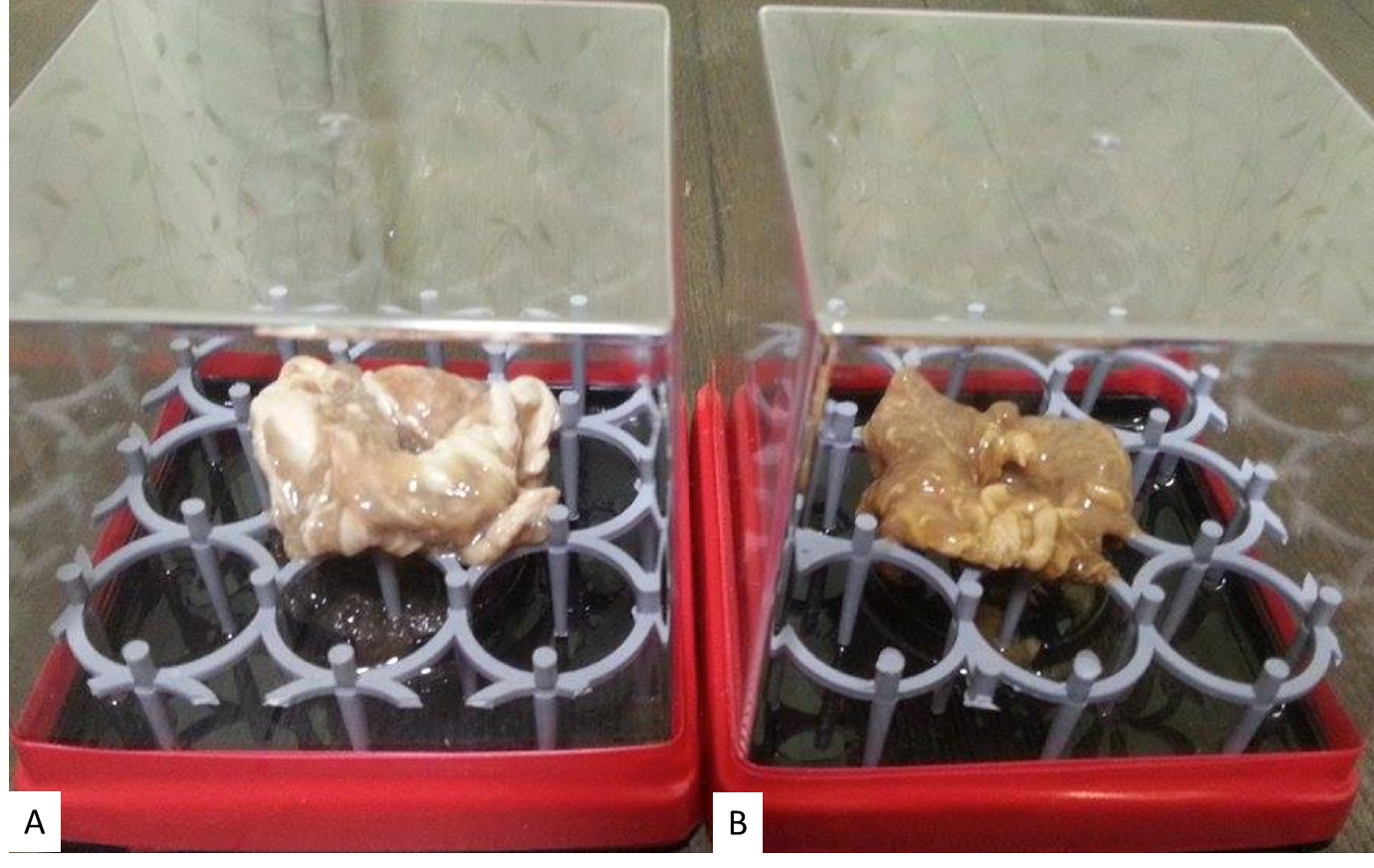Difference between revisions of "Team:Nagahama/Design"
(→isoprenoid production) |
(→Is it possible to preserve foods by Flavorator?) |
||
| (15 intermediate revisions by 3 users not shown) | |||
| Line 1: | Line 1: | ||
{{Nagahama}} | {{Nagahama}} | ||
| + | =Prototype= | ||
| + | Our project is Flavorator. We show its system working under real-world conditions in India . Because India has a problem about storage of foods. We want to spread Flavorator to the world , and we thought that our Flavorator can solve such as its problem. This is why we choose India. | ||
| − | + | According to Assocham that is Joint Chamber in India , | |
| − | Our | + | 30 percent of the total harvest of agricultural crops in India have been discarded by lack of refrigerated storage facility . |
| + | Refrigerated storage facility is insufficient in the retail market in rural areas and suburbs.In 2011, Refrigerator penetration in the cities is 43.8% , and the villages is 9.4%(Fig. 1). The penetration in rural areas is much smaller than the city . Its cause is considered that supply of electricity are not yet ready. To solve this problem, there is a need for method of preserving food products that do not require electricity in rural and suburban markets. Our Flavorator does not require electricity. So, we considered that it is used in situations such as the India, and designed Flavorator. | ||
| − | + | [[File:India graph.png|450px|thumb|none|Fig. 1:Refrigerator Penetration rate in Inindia ]] | |
| − | == | + | ==Design== |
| − | + | This is the design of Flavorator (Fig. 2) | |
| − | + | ・Container of medium is attached in above the box , fragrances is produced from there (①). As a result, fragrance circulates without electricity (③). This phenomenon is called natural convection. | |
| − | + | ・It must to keep temperature in Flavorator for recombinants activity. A layer of vacuum suppress the change of temperature in Flavorator because it work as a heat insulator.(②) | |
| − | + | ・The container of the medium is covered by a triple filter, it prevents the contact of recombinants and foods (④). Recombinants are larger than the mesh of filter, so they can't go through a triple filter , but fragrance is able to pass through because its molecules are smaller than the mesh (Fig. 3). | |
| − | + | ・Fragrance can be chosen by changing recombinants to others. | |
| − | + | [[File:Fravorator_prototype.png|450px|thumb|none|Fig. 2: Design of Fravorator ]] | |
| − | + | [[File:Filter修正.png|400px|thumb|none|Fig. 3:filer]] | |
| − | + | ==Is it possible to preserve foods by Flavorator?== | |
| − | + | We experimented preserving food by fragrance with antimicrobial activity. Fig. 4 is preservation of pork by garlic, and Fig. 5 is preservation of bread by geraniol. The mashed garlic and geraniol releases fragrant substances that has antimicrobial activity. | |
| − | + | From these result, we considered that foods can be preserved in Flavorator if our recombinants release a large amount of fragrance. | |
| − | + | [[File:にんにく.jpg|300px|thumb|left|Fig. 4:Storage of pork by garlic. | |
| + | (A) was put mashed garlic 5g in the bottom of box. Garlic does not touch pork. We left the two pork in the box at 18℃ for 2 months.2 months later, Left pork (A) didn’t change the color. Right pork (B) changed Pink to Brown.]][[File:パン.jpg|サイズpx|thumb|center|Fig. 5: Storage of bread by geraniol. | ||
| + | |||
| + | A:ddH2O(300 μl)B: geraniol(stock solution, 300 μl) | ||
| + | Incubation: 35 days | ||
| + | Temperature: room temperature | ||
| + | Chopsticks dipped in suspension of mold was put in the center of the bread. | ||
| − | + | Mold were cultured among the left box(A), and mold weren’t cultured among the right box(B).]] | |
| − | + | ||
| − | + | ||
| − | + | ||
| − | + | ||
| − | + | ||
| − | + | ||
| − | + | ||
| − | + | ||
| − | + | ||
| − | + | ||
| − | + | ||
| − | + | ||
| − | + | ||
| − | + | ||
| − | + | ||
| − | + | ||
| − | + | ||
| − | + | ||
| − | + | ||
| − | + | ||
| − | + | ||
| − | + | ||
| − | + | ||
| − | + | ||
| − | + | ||
| − | + | ||
| − | + | ||
| − | + | ||
| − | + | ||
| − | + | ||
| − | + | ||
| − | + | ||
| − | + | ||
| − | + | ||
| − | + | ||
| − | + | ||
| − | + | ||
| − | + | ||
| − | + | ||
| − | + | ||
| − | + | ||
| − | + | ||
| − | + | ||
| − | + | ||
| − | + | ||
| − | + | ||
| − | + | ||
| − | + | ||
| − | + | ||
| − | + | ||
| − | + | ||
| − | + | ||
| − | + | ||
| − | + | ||
| − | + | ||
| − | + | ||
| − | + | ||
| − | + | ||
| − | + | ||
| − | + | ||
| − | + | ||
| − | + | ||
| − | + | ||
| − | + | ||
| − | + | ||
| − | + | ||
| − | + | ||
| − | + | ||
| − | + | ||
| − | + | ||
| − | + | ||
| − | + | ||
| − | + | ||
| − | + | ||
| − | + | ||
| − | + | ||
| − | + | ||
| − | + | ||
| − | + | ||
| − | + | ||
| − | + | ||
| − | + | ||
| − | + | ||
| − | + | ||
| − | + | ||
| − | + | ||
| − | + | ||
| − | + | ||
| − | + | ||
| − | + | ||
| − | + | ||
| − | + | ||
| − | + | ||
| − | + | ||
| − | + | ||
| − | + | ||
| − | + | ||
| − | + | ||
| − | + | ||
Latest revision as of 10:08, 18 September 2015
Prototype
Our project is Flavorator. We show its system working under real-world conditions in India . Because India has a problem about storage of foods. We want to spread Flavorator to the world , and we thought that our Flavorator can solve such as its problem. This is why we choose India.
According to Assocham that is Joint Chamber in India , 30 percent of the total harvest of agricultural crops in India have been discarded by lack of refrigerated storage facility . Refrigerated storage facility is insufficient in the retail market in rural areas and suburbs.In 2011, Refrigerator penetration in the cities is 43.8% , and the villages is 9.4%(Fig. 1). The penetration in rural areas is much smaller than the city . Its cause is considered that supply of electricity are not yet ready. To solve this problem, there is a need for method of preserving food products that do not require electricity in rural and suburban markets. Our Flavorator does not require electricity. So, we considered that it is used in situations such as the India, and designed Flavorator.
Design
This is the design of Flavorator (Fig. 2)
・Container of medium is attached in above the box , fragrances is produced from there (①). As a result, fragrance circulates without electricity (③). This phenomenon is called natural convection.
・It must to keep temperature in Flavorator for recombinants activity. A layer of vacuum suppress the change of temperature in Flavorator because it work as a heat insulator.(②)
・The container of the medium is covered by a triple filter, it prevents the contact of recombinants and foods (④). Recombinants are larger than the mesh of filter, so they can't go through a triple filter , but fragrance is able to pass through because its molecules are smaller than the mesh (Fig. 3).
・Fragrance can be chosen by changing recombinants to others.
Is it possible to preserve foods by Flavorator?
We experimented preserving food by fragrance with antimicrobial activity. Fig. 4 is preservation of pork by garlic, and Fig. 5 is preservation of bread by geraniol. The mashed garlic and geraniol releases fragrant substances that has antimicrobial activity.
From these result, we considered that foods can be preserved in Flavorator if our recombinants release a large amount of fragrance.





